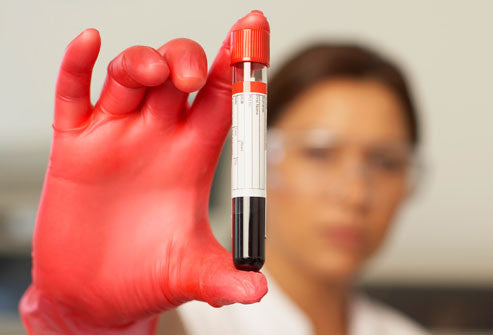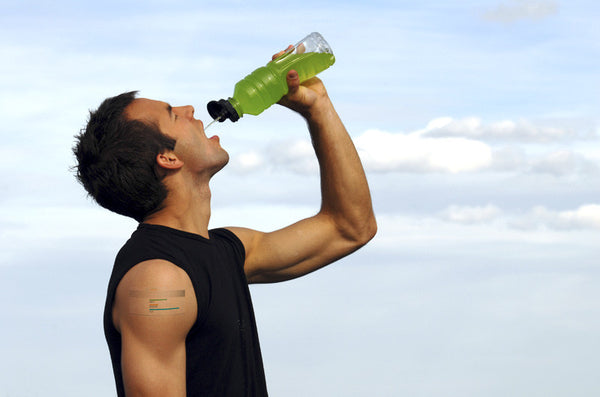Bloodwork: The Key to Longevity

By Jared Boynton
Have you ever bought a used car? They typically look fantastic on the outside – well polished, clean, perhaps even sporty – but they also tend to be riddled with problems under the hood that you’d never notice at first glance. Problems that can be expensive to fix.
I hate to be the bearer of bad news, but under-the-hood issues with a car pale in comparison to under-the-hood issues that plague your body. Athletes assume that because they’re dieting “clean” and devoting a significant portion of time to effective workout progression and cardio, they’re healthy. This is often not the case; and the only way to be sure is to get bloodwork done on a regular basis to be sure. Here’s why –
- 60% of Thyroid dysfunctions in the US go undiagnosed, with cholesterol, blood pressure, sex hormone, insulin sensitivity, and pituitary issues following closely behind.
- Thyroid, cholesterol, blood pressure, sex hormone, insulin sensitivity, and pituitary issues are nearly impossible to diagnose without the proper blood panels.
- Without knowing the wars your body is raging internally, athletes will never be able to progress to their maximum potential.
- These issues can be present without many noticeable effects, and unless diagnosed early, can cost you outrageous amounts of money to treat and resolve.
Let’s look at a few of the common disorders that that can be easily diagnosed via the yearly blood panel that comes with your annual physical, as that’s probably the most accessible (free) blood test that many readers will be willing to pursue.
Hypo/Hyperthyroidism:
Hypothyroidism is a downregulation of the body’s TSH (thyroid stimulating hormone) OR the body’s ability to convert T4, the precursor thyroid hormone, to T3, the primary thyroid hormone that regulates metabolic rate. This will obviously impact any athlete’s ability to achieve desired conditioning, as a downregulated thyroid will make fat loss much more difficult than a normally-functioning one. Athletes with hypothyroidism will also have a much lower capacity for muscle protein synthesis - as a result, most consumed nutrients will be stored directly as fat and muscle gain will become extremely difficult.
Hyperthyroidism is the opposite, and arguably much more dangerous. Characterized by a low TSH reading and higher than usual T4 and T3 readings, hyperthyroidism will result in extreme muscle depleting and a high rate of muscle protein catabolism, making weight gain almost impossible at any reasonable caloric intake. Other effects can include tremors, anxiety, insomnia, and a host of potentially life-threatening effects.
If you’re doing everything right and your weight isn’t moving in the direction it should be, a thyroid panel should be your first priority. If diagnosed with one of these disorders, treatment options often consist of prescribed supplemental thyroid hormones (T3, T4), or, in the case of hyperthyroidism, antithyroid medication such as methimazole.
Low-T (Hypotestosteroneism):
Low-T, a disorder characterized by lower than reference range levels of testosterone, is not a male-only disorder. Effecting both males and females, low testosterone will directly impact an athlete’s strength gains, size gains, and capacity for fat oxidation (fat loss). And those are only the effects on your training protocol and periodization – Low T can also cause depression, sleep disturbances, memory reduction, reduced sex drive, infertility, and even osteoporosis.
If you’re noticing that you’re having issues with libido as well as progression towards your training goals, a Male Hormone panel should be requested from your primary care doctor. Treatment options range from topical testosterone gel to prescribed testosterone injections.
Insulin Resistance (Type 2 Diabetes):
Characterized by fasted blood glucose readings of over 100, diabetes is one of the most-diagnosed endocrine disorders in the world. That being said; diabetes still goes undiagnosed in almost 40% of cases worldwide. In regards to meeting progression goals, insulin resistance will result in massive amounts of fat storage both viscerally and subcutaneously; without insulin sensitivity in the tissues that matter to athletes – muscle tissues – the fat will accumulate in between organs and under the skin. Exactly where we don’t want it to go.
Warning signs include extreme thirst (due to urinating out excess blood glucose), insatiable hunger and fatigue (due to insulin resistance depriving your cells of the fuel they need to function), and nerve pain in your feet or legs. If you’re experiencing any of these, or even believe you may be beginning to experience any of these, it’s worth picking up a glucometer at the grocery store to test your fasted blood glucose in the mornings. If your numbers show anything approaching 100 or slightly over, be sure to speak to your primary care physician about treatment options.
Unbalanced Blood Lipids (Bad Cholesterol) and High Blood Pressure:
Before we dig into this – please note that there’s a lot of bad and controversial information out there regarding cholesterol. Reference ranges may be out of date, and athletes can certainly live comfortably with unbalanced cholesterol levels as long as they’re reasonable. That being said; if things are WAY out of whack, your HDL is bottomed out, and your LDL is triple the reference value, you’re definitely putting yourself in a bad position. Unfortunately, there aren’t really any symptoms that would present without a blood panel, and you’ll only know you’re having heart issues when it’s too late if cholesterol is truly an issue. I recommend getting these done at least once a year, when it’s time for your yearly physical.
High blood pressure falls into the same class of heart-related internal issues, and can be characterized by anxiety in reaction to stimulants, heart arrhythmia, persistent headaches, and a number of other issues. Thankfully, blood pressure is easy to test. Most grocery stores have automatic blood pressure cuffs that will take your readings for free.
Treatment options for bad cholesterol are often supplement-based: I recommend Red Yeast Rice, Policosanol, Inositol, Circumin, and Fish Oil to bring your cholesterol levels back in check. Policosanol and Inositol in particular will both raise HDL and lower LDL, and are extremely valuable additions to any health-centric supplement stack.
Treatment for High Blood pressure can range from something as simple as increasing water intake and decreasing sodium intake to prescription beta-blockers to slow the heart.
Takeaways:
- Always get your yearly physical, which includes a fairly comprehensive blood panel.
- Keep an eye on the easy-to-identify symptoms listed above.
- If anything is in question regarding your progress – weight has stalled out, strength has ceased increasing, etc – and you feel your program is on point, bloodwork should be your first line of defense in identifying the underlying cause.
---------------------------------------------------------
Jared Boynton holds a degree in Biochemistry from the University of Tennessee, and is an internet-based performance and conditioning coach and the owner of Genomax Performance Coaching. His experience has been accrued through years of real-world implementation with both his own physique and the physiques of numerous clients. You can contact Jared via email at jared@genomaxcoaching.com or via his website, www.GenomaxCoaching.com.
References:
- Völzke H “The prevalence of undiagnosed thyroid disorders in a previously iodine-deficient area”, Thyroid. 2003 Aug;13(8):803-10.
- Fernandez ML “Rethinking dietary cholesterol.”, Curr Opin Clin Nutr Metab Care. 2012 Mar;15(2):117-21. doi: 10.1097/MCO.0b013e32834d2259.
- Huanguang Jia “Review of health risks of low testosterone and testosterone administration”, World J Clin Cases. 2015 Apr 16; 3(4): 338–344.
Leave a comment
Comments will be approved before showing up.



